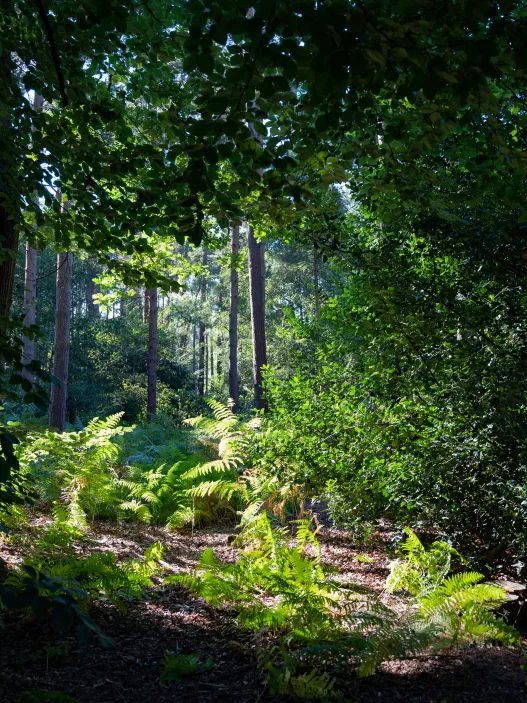Cornwall’s rugged coastline offers some of Britain’s most spectacular family walking opportunities, from gentle harbour strolls to clifftop adventures. The county’s diverse coastal paths cater to all ages and abilities, making it an ideal destination for families seeking outdoor adventures together.
Local families have access to over 400 miles of well-maintained coastal paths that range from pushchair-friendly promenades to exciting cliff walks suitable for older children. Many routes feature convenient facilities, wildlife viewing opportunities, and educational elements that keep young explorers engaged throughout their journey.
Parents can choose from accessible trails perfect for toddlers and pushchairs, moderate walks that challenge school-age children, and longer routes for adventurous families. The combination of stunning scenery, diverse wildlife, and practical amenities makes Cornwall’s coastal walks an excellent choice for memorable family days out.
Why Cornwall Is Perfect for Family Coastal Walks
Cornwall’s 630-mile coastline offers diverse terrain from gentle harbour walks to dramatic clifftop paths, whilst its temperate maritime climate provides year-round walking conditions. The county’s rich mining heritage and abundant wildlife create educational opportunities alongside stunning Atlantic and English Channel views.
Scenic Landscapes and Heritage
Cornwall’s coastal paths showcase dramatic granite cliffs, hidden coves, and expansive sandy beaches that captivate walkers of all ages. The South West Coast Path winds through landscapes shaped by centuries of tin and copper mining, with engine houses perched on clifftops creating striking silhouettes against the sky.
Families can explore historic fishing villages like Mousehole and Cadgwith, where narrow streets lead directly to working harbours. These settlements offer natural stopping points with cafés and shops, making longer walks manageable for children.
The coastline alternates between sheltered estuaries and exposed headlands. St Austell Bay provides gentle walks through china clay country, whilst Land’s End offers more challenging terrain with spectacular Atlantic views.
Heritage sites dot the coastal route, including Tintagel Castle and the Minack Theatre. These landmarks serve as destination points that motivate young walkers and provide educational context about Cornwall’s maritime and industrial past.
Mild Climate and Accessibility
Cornwall’s maritime climate creates favourable walking conditions throughout the year, with average temperatures ranging from 7°C in winter to 17°C in summer. The Gulf Stream’s influence moderates seasonal extremes, making coastal walks comfortable even during cooler months.
Most coastal settlements provide easy access to footpaths, with car parks located within walking distance of popular routes. National Trust properties along the coast offer additional facilities including toilets, refreshments, and visitor information.
The county’s extensive bus network connects coastal villages during peak season, allowing families to plan circular walks or return journeys without requiring two cars. Services like the Land’s End Coaster and Mousehole Shuttle operate between key walking destinations.
Weather patterns tend to be changeable but rarely extreme, with sea breezes providing natural cooling during summer walks. Rain showers are typically brief, and the coastal location means visibility often remains good even in overcast conditions.
Wildlife and Natural Highlights
Cornwall’s coastal waters support diverse marine life visible from shoreline paths, including grey seals at Godrevy Point and basking sharks off the north coast during summer months. Rock pools at low tide reveal crabs, anemones, and starfish that fascinate children.
The county hosts significant seabird colonies at sites like Bempton Cliffs and the Isles of Scilly approaches. Puffins nest on offshore islands, whilst cormorants and gannets are commonly spotted from mainland viewpoints.
Wildflower displays peak between April and September, with coastal heath supporting rare species like Cornish heath and spring squill. These natural gardens provide educational opportunities about conservation and local ecology.
Dolphin and porpoise sightings occur regularly from headland positions, particularly around Falmouth Bay and St Ives. The Marine Discovery Centre at Newquay offers resources for families wanting to learn about local marine ecosystems before their walks.
Top Family-Friendly Coastal Walks in Cornwall
These coastal walks offer easy terrain, stunning views, and facilities that make them perfect for families with children. Each route provides safe paths, nearby amenities, and attractions that will keep young walkers engaged throughout the journey.
St Ives to Carbis Bay Walk
This gentle 1.5-mile coastal path connects two of Cornwall’s most popular beaches. The route follows well-maintained pavements and coastal paths suitable for pushchairs on most sections.
The walk begins at St Ives harbour and heads southwest along the South West Coast Path. Families can explore the town’s narrow streets and art galleries before setting off.
The path offers spectacular views across St Ives Bay. Children will spot seals basking on rocks below and various seabirds diving for fish.
Carbis Bay provides the perfect reward at the walk’s end. The sheltered beach features golden sand and calm waters ideal for swimming and paddling.
| Walk Details | Information |
|---|---|
| Distance | 1.5 miles |
| Duration | 45-60 minutes |
| Difficulty | Easy |
| Terrain | Coastal path and pavement |
Public toilets are available at both St Ives and Carbis Bay. Several cafés and shops line the route for refreshments and supplies.
Falmouth’s Pendennis Point
The Pendennis Point circular walk covers approximately 2 miles around Falmouth’s historic headland. This easy route combines coastal scenery with fascinating history at Pendennis Castle.
Families can start from Falmouth town centre or the castle car park. The path is mostly flat with only gentle inclines, making it suitable for all ages.
The Tudor castle provides an exciting exploration opportunity for children. Interactive displays and cannon demonstrations bring history to life during summer months.
Spectacular views extend across Falmouth Bay and the Carrick Roads. Children often spot ferries, sailing boats, and cargo ships entering the busy harbour.
The walk passes several small beaches perfect for rock pooling. Castle Beach offers safe swimming in sheltered waters during high tide.
| Facilities | Available |
|---|---|
| Car parking | Castle car park (charges apply) |
| Toilets | Castle and town centre |
| Refreshments | Castle café and Falmouth shops |
The route connects easily with Falmouth’s other attractions, including the National Maritime Museum and Gyllyngvase Beach.
Polperro to Talland Bay
This 2-mile clifftop walk links the picturesque fishing village of Polperro with the tranquil Talland Bay. The route offers moderate terrain with some steep sections requiring careful supervision of young children.
Starting from Polperro’s harbour, families first explore the village’s narrow streets and historic buildings. The Heritage Museum provides insight into local fishing traditions.
The coastal path climbs gradually from the village, offering breathtaking views back towards Polperro. Stone stiles and gates require assistance for smaller children in some sections.
Talland Bay features two beautiful beaches separated by rocky outcrops. The sheltered coves provide excellent rock pooling opportunities during low tide.
The 14th-century St Tallan’s Church sits dramatically on the clifftop above the bay. Its ancient graveyard and peaceful setting fascinate visitors of all ages.
| Walk Features | Details |
|---|---|
| Distance | 2 miles one way |
| Terrain | Clifftop path with stiles |
| Best time | Low tide for rock pooling |
Return transport requires either walking back or arranging car collection. The nearby Talland Bay Beach Café serves refreshments during summer months.
Tintagel to Trebarwith Strand
The 1.8-mile coastal walk from Tintagel to Trebarwith Strand combines dramatic clifftop scenery with Arthurian legends. This moderate route requires sturdy footwear due to uneven terrain.
Tintagel Castle provides the perfect starting point for this adventure. The medieval ruins and legendary connections to King Arthur captivate children’s imaginations.
The path follows the rugged coastline with steep drops requiring constant supervision. Several viewing points offer spectacular photo opportunities of the dramatic slate cliffs.
Trebarwith Strand rewards walkers with a magnificent sandy beach at low tide. The beach disappears during high tide, so timing is crucial for beach activities.
The Port William section features remnants of the old slate quarrying industry. Information boards explain the area’s industrial heritage and geological significance.
| Important Information | Details |
|---|---|
| Distance | 1.8 miles |
| Difficulty | Moderate |
| Tide dependency | Beach access at Trebarwith |
| Facilities | Limited – bring supplies |
The walk requires good weather conditions due to exposed clifftop sections. Trebarwith Strand car park provides convenient collection point for return transport.
Best Walks for Young Children
These three coastal walks offer gentle terrain, manageable distances, and engaging features that keep little ones entertained. Each route provides safe paths with minimal elevation changes and plenty of opportunities for beach play and wildlife spotting.
Porthcurno to Logan Rock
The Porthcurno to Logan Rock walk spans approximately 1.5 miles along well-maintained coastal paths. This route offers spectacular views of the famous Minack Theatre carved into the cliffside.
The path begins at Porthcurno Beach car park and follows clearly marked signs towards Treen. Children can explore the pristine sandy beach before starting the gentle uphill climb.
Key features for families:
- Wide, stable paths suitable for pushchairs on most sections
- Multiple stopping points with benches
- Protected coves for safe paddling
- Wildlife spotting opportunities including seals and dolphins
Logan Rock itself weighs 80 tonnes and was once famous for rocking at a human touch. Though it no longer moves easily, children enjoy the story and the dramatic clifftop setting.
The return journey offers different coastal perspectives. Families can extend the walk by exploring Pedn Vounder Beach at low tide, accessible via a steep but manageable path.
Bude Canal and Coast Path Loop
This 2-mile circular walk combines inland waterways with coastal scenery. The route starts from Bude town centre and follows the historic canal before returning via the South West Coast Path.
The canal section provides flat, traffic-free walking on the towpath. Children can watch narrowboats navigate the sea lock and observe waterfowl in the calm waters.
Distance breakdown:
- Canal section: 1 mile (flat)
- Coastal return: 1 mile (gentle inclines)
- Total walking time: 45-60 minutes with children
The coastal path section offers elevated views across Bude Bay. Several beach access points allow families to descend for sandcastle building and rock pooling.
Summerleaze Beach provides excellent facilities including toilets, cafés, and a tidal swimming pool. The natural rock pool fills with seawater at high tide, creating a safe swimming area for children.
Mawgan Porth Circular
The Mawgan Porth Circular covers 1.8 miles through varied coastal landscapes. This walk combines sandy beaches, grassy clifftops, and a picturesque valley return.
Starting from Mawgan Porth beach car park, the route heads north along the coast path. The initial section climbs gradually through low-growing coastal vegetation.
Family-friendly highlights:
- Stable clifftop paths with safety barriers
- Sheltered picnic spots in the valley
- Stream crossings via small bridges
- Archaeological features including ancient settlements
The path descends into the Vale of Mawgan, following a gentle stream through protected woodland. Children enjoy spotting butterflies and wildflowers along the valley floor.
Mawgan Porth beach itself offers excellent facilities for families. The wide sandy expanse provides safe swimming conditions, whilst rock pools at either end reveal crabs, anemones, and small fish during low tide.
Accessible Coastal Trails for Pushchairs and Wheelchairs
Cornwall offers several coastal routes specifically designed for wheelchair users and families with pushchairs. The Camel Trail provides flat, tarmacked surfaces along the Camel Estuary, whilst the Marazion causeway delivers stunning views of St Michael’s Mount on firm, accessible terrain.
Camel Trail Coastal Paths
The Camel Trail stretches 18 miles from Wenford Bridge to Padstow, with the most accessible coastal section running between Wadebridge and Padstow. This 5.5-mile stretch follows a converted railway line with a smooth tarmac surface.
The trail remains completely flat with gentle gradients never exceeding 1:60. Standard wheelchairs and pushchairs navigate the route easily without assistance.
Key Features:
- Designated parking areas at both Wadebridge and Padstow
- Public toilets with disabled access at regular intervals
- Café stops every 2 miles approximately
- Wide paths accommodating two wheelchairs side by side
The coastal section provides views across the Camel Estuary towards Rock and the Atlantic Ocean. Benches appear every 500 metres for rest stops.
Weather conditions rarely affect accessibility since the tarmac surface drains effectively. However, strong coastal winds can make progress challenging for some wheelchair users during winter months.
Marazion Beach to St Michael’s Mount Causeway
The causeway from Marazion to St Michael’s Mount offers a unique accessible coastal experience during low tide. This granite pathway extends 500 metres across Mount’s Bay.
The route remains accessible for approximately 3 hours either side of low tide. Firm granite cobbles provide stable surfaces for wheelchairs and pushchairs, though some sections require careful navigation.
Accessibility Details:
- Surface: Granite cobbles with even spacing
- Width: 4 metres minimum throughout
- Gradient: Gentle incline of 1:40 maximum
- Duration: 10-minute crossing each way
Marazion car park provides disabled parking spaces 200 metres from the causeway entrance. The path surface can become slippery during wet conditions.
Tide times change daily, requiring advance planning. The Mount’s Bay Tourist Information Centre provides current accessibility information and tide timetables.
Safety Tips for Coastal Walking with Children
Proper footwear prevents slips on wet rocks, checking tide times avoids dangerous areas, and preparing for Cornwall’s unpredictable weather keeps families safe during coastal adventures.
Choosing the Right Footwear
Children need sturdy walking boots with good ankle support for uneven coastal terrain. The boots should have deep treads that grip wet rocks and muddy paths effectively.
Waterproof boots keep feet dry when crossing streams or walking through puddles. Parents should ensure boots fit properly with thick walking socks to prevent blisters during longer walks.
Avoid these footwear choices:
- Flip-flops or sandals
- Smooth-soled trainers
- Brand new boots (break them in first)
- Shoes without ankle support
Wellington boots work well for short walks but lack proper support for longer coastal paths. They become uncomfortable after walking more than a mile on rocky surfaces.
Parents should pack spare socks in waterproof bags. Wet feet increase the risk of blisters and make children uncomfortable during walks.
Understanding Tide Times
High tide cuts off access to many beaches and rock pools along Cornwall’s coast. Parents must check tide times before starting any coastal walk with children.
Key tide safety rules:
- Check local tide times the night before
- Plan walks during mid to low tide periods
- Allow extra time to return before high tide
- Avoid walking near cliff bases at high tide
Some popular family beaches like Kynance Cove become completely inaccessible during high tide. The causeway to St Michael’s Mount closes approximately three hours before and after high tide.
Parents should download tide apps or check local tide tables posted at beach car parks. Morning low tides typically occur between 6am and 10am during summer months.
Rock pools appear most clearly during low tide periods. Children can explore safely when water levels drop and expose stable walking areas.
Preparing for Changing Weather
Cornwall’s coastal weather changes rapidly throughout the day. Parents should pack layers including waterproof jackets even on sunny mornings.
Essential weather items:
- Waterproof jackets for all family members
- Warm fleece or jumper layers
- Sun hats and sunglasses
- Factor 30+ sunscreen
- Emergency whistle
Sea breezes make coastal paths feel 5-10 degrees cooler than inland areas. Children lose body heat faster than adults, especially when clothes become damp from sea spray.
Parents should check weather forecasts and wind speeds before leaving. Winds above 25mph make coastal walking dangerous for small children near cliff edges.
Pack extra clothes in waterproof bags. Spare jumpers and socks allow families to continue walks if weather conditions improve after sudden showers.
What to Pack for a Coastal Family Day Out
Successful coastal walks require proper preparation with the right gear and provisions. The unpredictable Cornish weather and varied terrain demand specific items for comfort and safety.
Essentials for Comfort
Waterproof jackets remain the most critical item for Cornish coastal walks. The weather can change rapidly, and sea spray adds moisture even on dry days.
Sturdy walking boots with good grip prevent slips on wet rocks and cliff paths. Trainers lack the ankle support needed for uneven coastal terrain.
Sun cream (SPF 30+) protects against UV rays that reflect off water and sand. The sea breeze often masks the sun’s intensity.
Layers work better than single thick garments. A base layer, fleece, and waterproof shell allow quick adjustments as conditions change.
Hats and sunglasses shield faces from sun and wind. Wide-brimmed hats provide better protection than caps.
First aid kit should include plasters, antiseptic wipes, and pain relief tablets. Coastal paths can cause minor cuts and scrapes.
Snacks and Hydration Choices
Water bottles for each family member prevent dehydration. Coastal walks often lack water fountains, particularly on remote stretches.
Energy-rich snacks like nuts, dried fruit, and cereal bars maintain stamina without weighing down rucksacks. Bananas provide quick energy and potassium.
Sandwiches offer substantial nutrition for longer walks. Wraps stay fresher than bread in humid coastal conditions.
Thermos flasks with hot drinks provide warmth during cooler months. Hot chocolate works well for children after windy clifftop walks.
Wet wipes clean sticky fingers and sandy hands before eating. They remove salt residue that accumulates during coastal walks.
Wildlife Encounters and Nature Education Along the Coast
Cornwall’s coastal paths offer exceptional opportunities to observe marine life in rockpools and spot diverse seabirds throughout the year. The county’s varied coastline provides habitats for both common and rare species.
Rockpooling and Sea Life
Prime rockpooling locations include Wembury Beach, Constantine Bay, and the beaches around St Ives. Low tide reveals pools containing anemones, crabs, limpets, and periwinkles.
Children can spot hermit crabs scuttling between rocks and watch sea anemones close when touched. Blennies dart between crevices whilst prawns hide beneath seaweed fronds.
Essential rockpooling kit:
- Plastic containers for temporary observation
- Magnifying glass
- Identification charts
- Non-slip shoes
The Marine Conservation Society provides excellent identification guides for common species. Visitors should always return creatures to their original pools and avoid disturbing larger rocks.
Porthcurno and Kynance Cove offer particularly rich rockpool ecosystems. The clear water allows families to observe sea urchins, starfish, and small fish species without removing them from their habitat.
Birdwatching Opportunities
Seabird colonies thrive along Cornwall’s cliffs between March and August. Bempton Cliffs and the Isles of Scilly host thousands of puffins, guillemots, and razorbills during breeding season.
Gannets nest at Bass Rock viewable from coastal paths near Boscastle. Their distinctive diving behaviour provides excellent educational opportunities for young naturalists.
Year-round species include:
- Cormorants on harbour walls
- Turnstones on rocky shores
- Oystercatchers along beaches
- Peregrine falcons on cliff faces
The RSPB reserves at Hayle and Marazion offer guided walks during school holidays. Binoculars suitable for children are available for loan at visitor centres.
Godrevy Point provides excellent vantage points for observing grey seals alongside seabirds. The lighthouse area offers shelter during windy conditions whilst maintaining clear sightlines across the bay.
Recommended Places to Eat and Stay Near the Coastal Paths
Cornwall’s coastal paths offer excellent dining options from traditional pubs serving local seafood to family-run cafés with homemade treats. Accommodation ranges from budget-friendly hostels and campsites to luxury hotels with sea views.
Family-Friendly Cafés and Pubs
The Gannet Inn in Carbis Bay serves fresh fish and chips with a dedicated children’s menu. The pub sits just 200 metres from the coastal path and offers high chairs and colouring books.
Porthminster Beach Café in St Ives provides beachfront dining with locally sourced seafood. Families can enjoy the outdoor terrace whilst children play on the adjacent beach.
The Ship Inn at Mousehole features a beer garden overlooking the harbour. Their Sunday roasts and Cornish pasties appeal to all ages, with smaller portions available for children.
Rick Stein’s Fish in Falmouth offers takeaway fish and chips perfect for coastal picnics. The shop provides biodegradable packaging and locally caught fish.
The Coastguard at St Agnes Head serves cream teas and light lunches. The café’s panoramic cliff-top location makes it ideal for walkers seeking refreshment mid-route.
Accommodation Options for All Budgets
YHA Lands End provides dormitory beds from £25 per night with self-catering facilities. The hostel sits directly on the coastal path with stunning Atlantic views.
Tanner Farm Park near Mevagissey offers camping pitches from £18 per night. Facilities include hot showers, a shop, and children’s playground within walking distance of coastal paths.
The Falmouth Hotel provides family rooms from £120 per night with full English breakfast. The Victorian hotel features an indoor pool and sits 500 metres from Gyllyngvase Beach.
Premier Inn Newquay offers budget-friendly family rooms from £65 per night. The hotel provides free parking and easy access to the South West Coast Path.
The Nare Hotel near Veryan delivers luxury accommodation from £300 per night. This five-star hotel features spa facilities and direct beach access for serious walkers seeking comfort.
Frequently Asked Questions
Cornwall’s coastal paths offer numerous family-friendly options with varying difficulty levels, essential facilities, and seasonal considerations. The South West Coast Path provides accessible routes near accommodation options throughout the year.
What are some recommended family-friendly routes along the Cornish coastline?
The Eden Project to Charlestown walk spans 3 miles along gentle terrain suitable for pushchairs. This route features minimal elevation changes and offers stunning harbour views.
St Ives to Carbis Bay provides a 2-mile coastal path with sandy beaches for rest stops. Children can explore rock pools and enjoy safe swimming areas along this well-maintained route.
Porthcurno to Minack Theatre covers 1.5 miles with dramatic cliff views. The path includes several benches and the famous open-air theatre as a destination point.
How can I find accessible coastal walks suitable for children in Cornwall?
Visit Cornwall Council’s website for detailed accessibility information on coastal paths. The site provides gradient maps, surface conditions, and pushchair-friendly route classifications.
Local tourist information centres in towns like Padstow and Falmouth offer printed guides. These resources include family-specific recommendations and current path conditions.
The South West Coast Path Association publishes annual guides with accessibility ratings. Each section receives difficulty ratings from 1-5 stars for family suitability.
Where can one locate comfortable accommodations along the South West Coast Path for families?
Premier Inn and Travelodge operate family rooms in coastal towns including St Austell and Newquay. These chains offer consistent standards with family-friendly amenities.
Holiday parks such as Hendra Holiday Park near Newquay provide static caravans and camping facilities. Many feature on-site restaurants, swimming pools, and children’s entertainment.
Boutique hotels in Fowey and Padstow cater specifically to families walking the coastal path. These establishments often provide packed lunches and route planning assistance.
Which sections of the South West Coast Path offer the easiest walks for those with children?
The Camel Trail from Padstow to Bodmin follows a converted railway line with flat surfaces. This 17-mile route allows families to choose shorter sections based on children’s abilities.
Falmouth to Pendennis Castle covers 2 miles on paved paths with minimal elevation. The route includes playground facilities and café stops every half-mile.
The Helford River path from Helford to Frenchman’s Creek spans 3 miles through woodland areas. Children can spot wildlife whilst walking on well-maintained bridleways.
What facilities are available for family walkers on the Cornwall coastal paths?
Public toilets appear every 2-3 miles along major coastal path sections. Most facilities include baby changing rooms and disabled access provisions.
Coastal cafés and pubs provide refreshments and shelter during adverse weather. Many establishments offer children’s menus and high chairs for younger visitors.
Car parks with designated family spaces operate at most popular starting points. These locations typically include information boards and first aid contact details.
When is the ideal time for families to embark on coastal walks in Cornwall?
May through September offers the warmest weather and longest daylight hours. School holidays during these months provide optimal conditions for family adventures.
Easter holidays present fewer crowds whilst maintaining mild temperatures. Many coastal facilities reopen after winter closures during this period.
October half-term delivers pleasant walking conditions with reduced tourist numbers. Families can enjoy clearer paths and discounted accommodation rates during this season.









